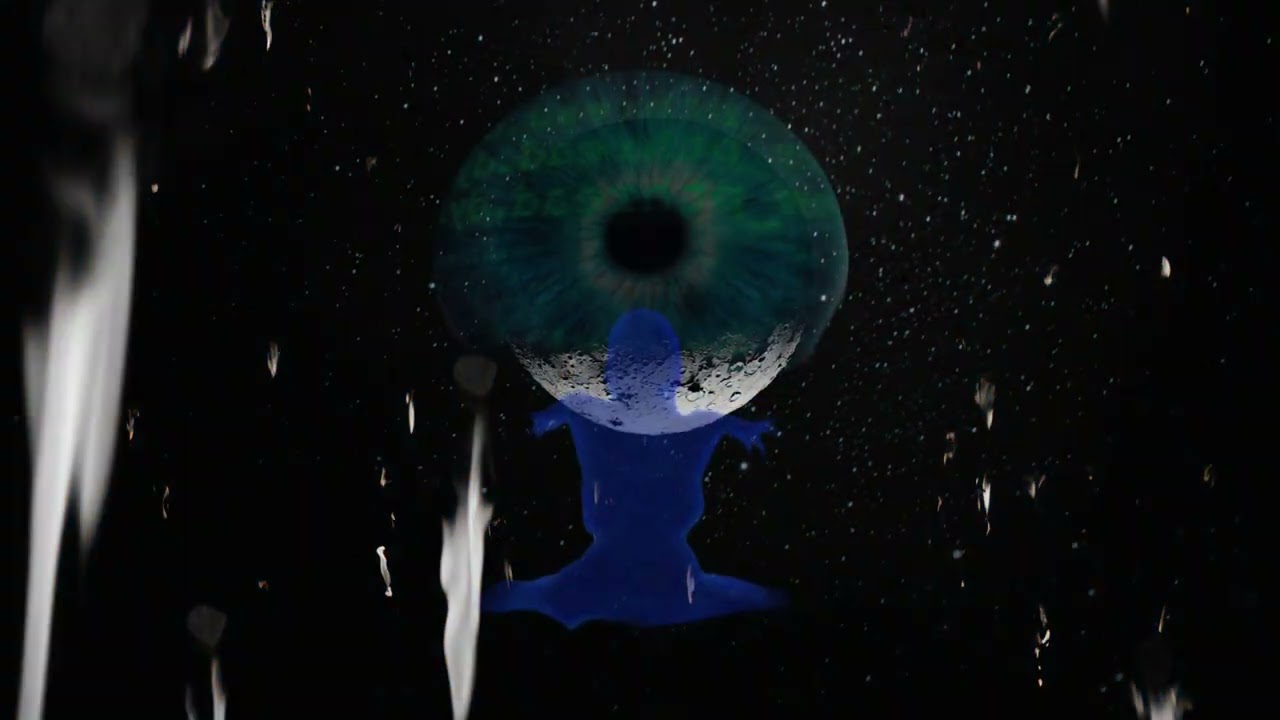In the flickering light of Diana Meridi’s video installations, one does not merely watch; one traverses. Her art functions less as a linear narrative than as a metaphysical terrain, inviting the viewer into internal realms spun from mysticism, illusion, and an ever-watchful eye. Meridi is not simply a maker of images, she is an Architect of the unseen, a conjurer of silent Gods and whispered truths. In a world increasingly intoxicated by surface appearances, Meridi peers beneath using the investigative lens of her art.
To speak of Meridi’s art is to speak of the eye—not the anatomical, but the symbolic, the divine optic that haunts her work. This oculocentric motif is more than a recurring symbol; it is a cipher, a portal, and at times, an interrogator. In Cosmic Observer, the eye floats like a celestial compass, creating a halo for a spectral figure that hovers between astronaut and deity. It could be a lens; it could be a soul. This ambiguity is Meridi’s gift and her challenge–she does not explain, she offers the viewer alternative interpretations.
The threshold is another of Meridi’s metaphors. Threshold of Awareness, another recent piece, crystallizes the space-between, that liminal moment before awakening, or the space between thought and knowing. A meditative figure, poised before an endless ocean, gazes upward, towards a swirling, eye-like sphere that levitates above the head. Meridi creates a trance-like image, reminding us that awareness is not a static possession, but a fragile, spiralling becoming.
Meridi’s work carries the weight of philosophical inquiry without collapsing under it. She does not illustrate ideas; she imbibes them. In this, she joins the lineage of celebrated moving image artists like Joan Jonas and Pipilotti Rist–women who tore open the potential of video art, not through domination, but through deep listening. In a field historically defined by masculine structures–think of Christian Marclay’s sampling, Bill Viola’s sublime endurance–Meridi’s voice is subterranean and spiralling. Her art resists monumentality. It murmurs instead.
If video, as Bill Viola once said, gives “structure to time,” then Meridi dissolves that structure. Time in her work flows like an enchanting spell, nonlinear and fluid. Each scene is an invocation. Her figures–whether fictional entities or archetypes pulled from dream–themselves seem barely tethered to earthly chronology. Their gestures, slow and hypnotic, exist in some plane between presence and disappearance.
There is an intimacy in Meridi’s Cosmology. Though vast in implication, Meridi’s worlds feel personal, hand-crafted, internal. She merges digital innovation with a kind of mythic intimacy. This tension–between the technological and the sacred–is where her brilliance lies. She doesn’t use video merely to depict; she uses it to uncover, to unearth. Her images are not answers, but riddles dressed in light.
In her work Synthetic Reflection, Meridi’s experiment with multi-media practice broadens this terrain. As viewers, we are offered more than images–we are immersed in layered textures of sound, sculpture, and narrative fragmentation. This extension into mixed media does not dilute her vision, rather it intensifies it. Meridi is not bound by the screen. She breaks its surface like a diver entering water, seeking what pulses beneath.
To watch a Meridi video is to risk transformation. Her art does not comfort, yet it raises questions and casts spells and shadows. The eye, always the eye, gazes not only from the screen but into us. What do we see, and what sees us?
More than a video artist Diana Meridi is a seeker, a mystic, a modern oracle in the garb of pixels and projections. Her art dares to ask not just what is real, but what reality hides. In an age of spectacle, she creates sanctuary. In a culture of noise, she conjures silence. And in that silence, the eye opens.

